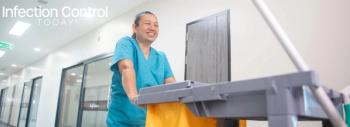
Is the Salad Bar Safe? Produce Concerns Linger after Summer Scares
COLUMBIA, Mo. – Widespread reports had most people afraid to eat tomatoes this summer and when tomatoes were vindicated, eating peppers became a fear. A University of Missouri food safety expert says there is only so much that can be done to assure produce is safe to eat.
“We basically want perfect food, but produce is not sterile,” said Andrew Clarke, associate professor of food science in the MU College of Agriculture, Food and Natural Resources. “We all have a risk of consuming something that doesn’t agree with us. There is no way to keep everything we eat 100 percent risk-free. Some people, who might be more susceptible, may get sick.”
Any food could potentially contain bacteria, according to Clarke, who also is an MU Extension state specialist. His best advice is to keep produce cold, wash hands before handling, and wash all surfaces to eliminate cross-contamination. Another alternative is to cook all produce.
“We like our fresh produce, and we don’t want to cook or can everything,” Clarke said. “Contamination could happen 1,000 miles away because someone didn’t wash his or her hands. A home isn’t a sterile environment either, so something can happen to contaminate produce in your own home. Hopefully, if you are healthy whatever contamination that might be present will not harm you.”
According to the U.S. Department of Agriculture, 76 million cases of foodborne illness occur each year. More than 325,000 people are hospitalized, and 5,000 die from foodborne illness.
The advice for cooking items, such as meat, is more clear-cut. Washing and rinsing may sound too simple to be effective, but Clarke says it is the best defense against bacteria on produce. Washing with water will not eliminate everything; however, he does not recommend using soap or rinsing with hot water.
“Unless you use scalding hot water, you don’t effectively kill the bacteria when rinsing produce,” Clarke said. “I don’t think using soap is a good idea because you don’t want to start consuming traces of soap. Anytime you wash the surface of produce, you can still miss bacteria that are microscopically embedded because it isn’t always on the surface. It’s like a pothole in the road. Someone could scrub the street with soap and water and rinse, but the material that fills the pothole is still there.”
Clarke advises using common sense when deciding if a food has gone bad or is still good enough to eat. “If it looks bad, smells bad, tastes bad, don’t eat it! It’s not worth giving to the dog either unless you want to end up taking the dog to the vet,” Clarke said.
Newsletter
Stay prepared and protected with Infection Control Today's newsletter, delivering essential updates, best practices, and expert insights for infection preventionists.






